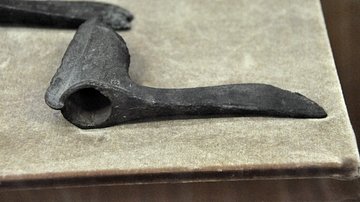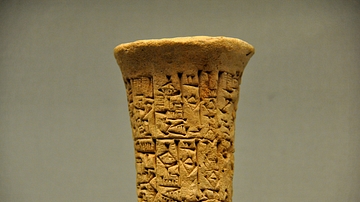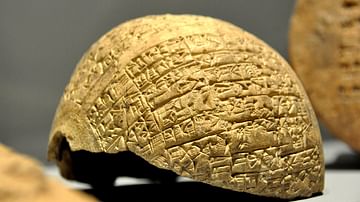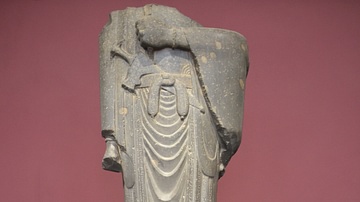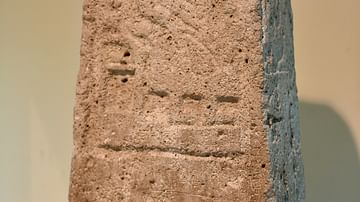Illustration
This black diorite statue depictes Entemena, a king (or ruler) of Lagash, around 2400 BCE; identified by the cuneiform inscriptions on the right shoulder and back. The king wears the typical flounced Sumerian skirt. The statue was found in the ancient city of Ur, in southern Iraq, in the 1920s. It was headless when it was excavated, and the head was probably chipped off in antiquity as a symbol of Ur's independence from Lagash.
This was the heaviest objected looted from the Iraq Museum (about 250 Kg), somewhere between April 10 to 12, 2003 CE after the fall of Saddam regime. The statue sustained some damage to its frontal surface during the looting. The statue was eventually returned, in a ceremony, to Iraqi officials on July 25, 2006 CE.
The statue is now once again on display in the Sumerian Gallery of the Iraq Museum in Baghdad, Republic of Iraq.
About the Author
Cite This Work
APA Style
Amin, O. S. M. (2019, April 11). Headless Statue of Entemena of Lagash. World History Encyclopedia. Retrieved from https://www.worldhistory.org/image/10396/headless-statue-of-entemena-of-lagash/
Chicago Style
Amin, Osama Shukir Muhammed. "Headless Statue of Entemena of Lagash." World History Encyclopedia. Last modified April 11, 2019. https://www.worldhistory.org/image/10396/headless-statue-of-entemena-of-lagash/.
MLA Style
Amin, Osama Shukir Muhammed. "Headless Statue of Entemena of Lagash." World History Encyclopedia. World History Encyclopedia, 11 Apr 2019, https://www.worldhistory.org/image/10396/headless-statue-of-entemena-of-lagash/. Web. 16 Apr 2025.



